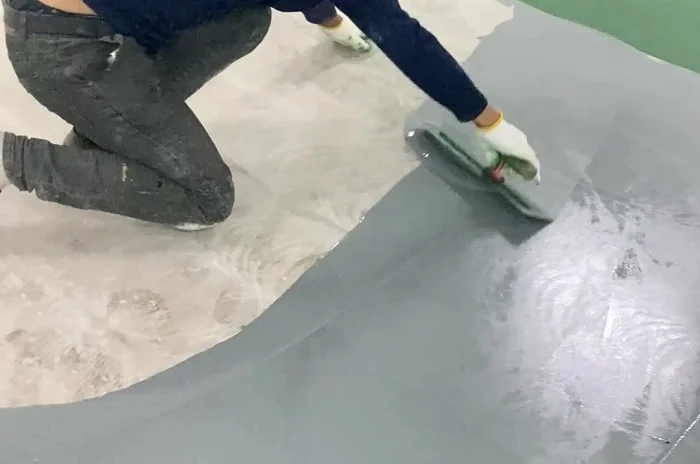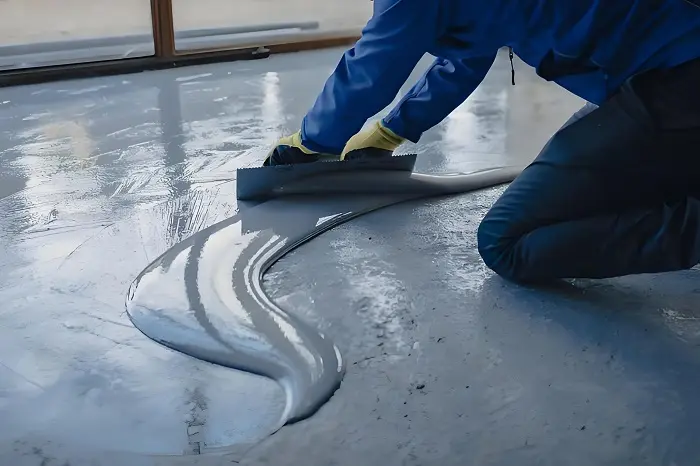
Epoxy putty is a high-performance filler material based on epoxy resin, widely used in construction, shipbuilding, machinery manufacturing and other fields, especially suitable for concrete substrate repair, metal anti-corrosion pretreatment and other scenarios. Its core advantages are excellent adhesion, mechanical strength and chemical resistance.

Main components
(1) Epoxy resin system
Bisphenol A type epoxy resin (E-44/E-51) is used as the matrix material, accounting for about 25-35%, to provide adhesion and cured mesh structure.
(2) Curing agent system
Fatty amine (e.g. T31) or polyamide curing agent, accounting for 8-15%, crosslinking reaction with the resin to form a three-dimensional network structure.
(3) Functional filler
Quartz powder (200-400 mesh): 40-50%, to improve the hardness and wear resistance.
Talc (800 mesh): 10-15%, to improve the smoothness of construction.
Silica micropowder: 5-8%, to enhance densification
(4) Modifying additives
Cellulose ether (HPMC/MC): 0.3-0.8%
Antifoam agent (silicone): 0.1-0.3%
Thixotropic agent (fumed silica): 0.5-1.2%
Material properties
Compressive strength: ≥60MPa
Bond strength: ≥3.5MPa (concrete substrate)
Curing shrinkage rate: <0.05%
Application period (25℃): 40-60 minutes
The core mechanism of cellulose ethers
As a key modifier in epoxy putty, cellulose ether (commonly used hydroxypropyl methyl cellulose HPMC) significantly improves material properties through multiple mechanisms:
Rheological modification control
Thixotropic adjustment: through hydrogen bonding to form a three-dimensional network structure, increase the viscosity of the system at rest (up to 5,000-8,000cps), the construction of the viscosity under shear down to 2,000-3,000cps, to achieve the construction characteristics of the "standing knife does not flow, scraping and scraping smooth".
Anti-settlement stabilization: the quartz powder with density difference of 2.6g/cm³ is evenly suspended in the system, and the settlement rate is <5% in 24 hours.
Moisture management
Water retention and retardation: In the epoxy-amine curing system, the hydroxyl group of HPMC forms hydrogen bonds with amine curing agent, extending the application period by 15-20%.
Volatilization inhibition: film-forming properties reduce the rate of solvent volatilization, avoiding cracking caused by surface drying too quickly.
Interface enhancement
Improve the wettability of resin to filler, the contact angle is reduced from 65° to 32°.
Formation of a gradient transition layer during curing to reduce interfacial stresses
Process optimization
Extend the open time to 25-35 minutes (only 15-20 minutes without additive).
Reduce scraping resistance by 30-40%, improve the construction efficiency.
The standard construction process
Base surface treatment
Concrete substrate: sandblasted to Sa2.5 level, water content <6%.
Metal substrate: sandblasting rust removal up to St3 level, roughness 40-70μm.
Oil treatment: acetone scrubbing → phosphating treatment (metal substrate)
Material preparation
Component A (resin slurry):Component B (curing agent) = 4:1 (weight ratio).
Mixing process:
① Low speed (300rpm) mixing for 1 minute.
② Medium-speed (600rpm) mixing for 2 minutes.
③ Leave to defoam for 3 minutes and then mix for 1 minute.
Scraping
Tool: Stainless steel spatula (edge thickness 0.3-0.5mm)
Construction parameters:
Thickness of single pass: 1-3mm
Inter-layer interval: 4-6 hours (25℃)
Maximum cumulative thickness: ≤15mm
Curing maintenance
Initial curing: 25℃/24h (sandable condition)
Full curing: 25℃/7d or 60℃/4h
Environmental control: temperature 10-35℃, relative humidity <75%.

Solutions to common problems
| Appearance | Cause of formation | Countermeasures |
| Blistering | Unclosed pores in the substrate | Apply epoxy primer first |
| Hanging | Insufficient addition of HPMC | Increase the dosage by 0.2% and compound 0.3% gas phase SiO₂. |
| Slow curing | Mismatch of amine value | Replace fast curing T31 hardener |
| Interface peeling | Insufficient substrate strength | Substrate strength should be ≥C25 |
Technology Development Outlook
With the improvement of green building requirements, the future epoxy putty will break through in two directions:
Low-temperature curing system: develop modified amine curing agent which can be constructed at -5℃.
Bio-based substitution: replace 30-50% of petroleum-based epoxy resin with natural materials such as cashew nut phenol.
Smart response materials: add temperature-sensitive cellulose ether (LCST type) to realize self-healing function.
Through continuous optimization of the formulation system, especially the research on the synergistic effect of cellulose ether and other additives, epoxy putty will play a more important role in the field of industrial protection.



Leave a Reply